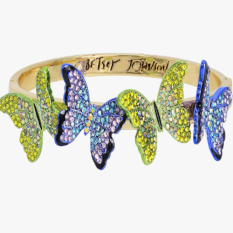How the Pandemic Will Affect Seasonal Affective Disorder (SAD) This Year
Preventative measures can go a long way.

This year has been a rollercoaster for more reasons than one. The chillier weather is starting up, and while we typically use this time to gear up for flu season, experts are warning that this year, not only COVID-19, but seasonal affective disorder (SAD) will need to be high on our radar.
SAD is a type of depression that rears its head when the cooler months come along, and it encompasses a lot more than just being sad. According to the American Psychiatric Association, getting less sunlight can affect our serotonin levels — a neurotransmitter that’s been linked to depression. That being said, SAD is also largely affected by where you live. For example, the further away from the equator you are, the more likely you are to experience SAD.
SAD and COVID-19
As it turns out, experts are saying that SAD and COVID-19 could be inextricably linked this year, the reason being — you guessed it — stress. Speaking to Healthline, Dayry Hulkow, primary therapist at Vista Pines Health, a Delphi Behavioral Health Group facility, said, “COVID has brought major life changes, traumas, and stresses to a great number of people — not to mention the physical illnesses for those positively affected by the virus. This could become a serious concern for those with a history of SAD, particularly in the northern parts of our country and even more so in the areas most affected by the pandemic.”
Social withdrawal is one of the many symptoms of SAD, and as we’re being advised to adhere to social distancing guidelines, working from home, and avoiding leisurely activities like movies or dinner parties, Hulkow asserts thats this could place extra strain on our ability to stay mentally healthy during this already challenging time of the year.
According to the Mayo Clinic, other symptoms of SAD to be on the lookout for include loss of interest in activities you once enjoyed, low energy or excessive sleeping, weight gain, overeating, and an increase in carb cravings.
What to Do About SAD
Hulkow suggests that there are indeed ways that we can minimize our risk of experiencing SAD. “There are many preventive measures that can help safeguard our mental health and well-being. Things such as regular exercise, healthy eating, and adequate sleep are always important aspects of daily self-care practices,” he said. “Maintaining meaningful connections with close family and friends can help prevent or minimize the prevalence of SAD, as well as other mental health conditions.”
This season, it’s clear that it will be especially important to prioritize self care. While we may be a little bit more stressed out than usual, simple preventative measures can go a long way in helping us to manage our mental health. So go ahead and run that hot bath, schedule that family zoom call, or prepare your favorite meal for dinner tonight. And if you need other ideas, check out some of our favorite tips for managing stress, as well as these light therapy lamps which are said to help with SAD symptoms by supplementing light exposure!













